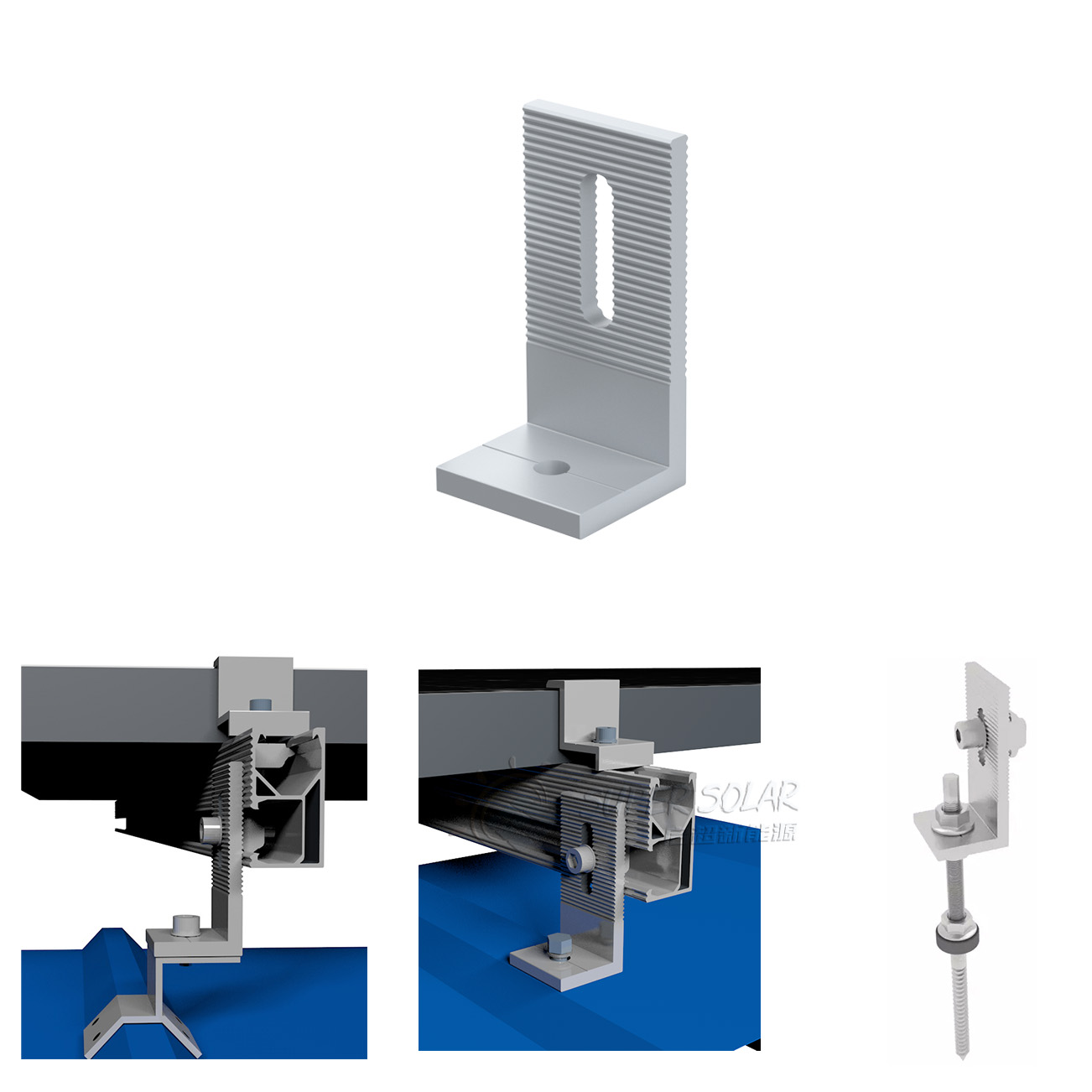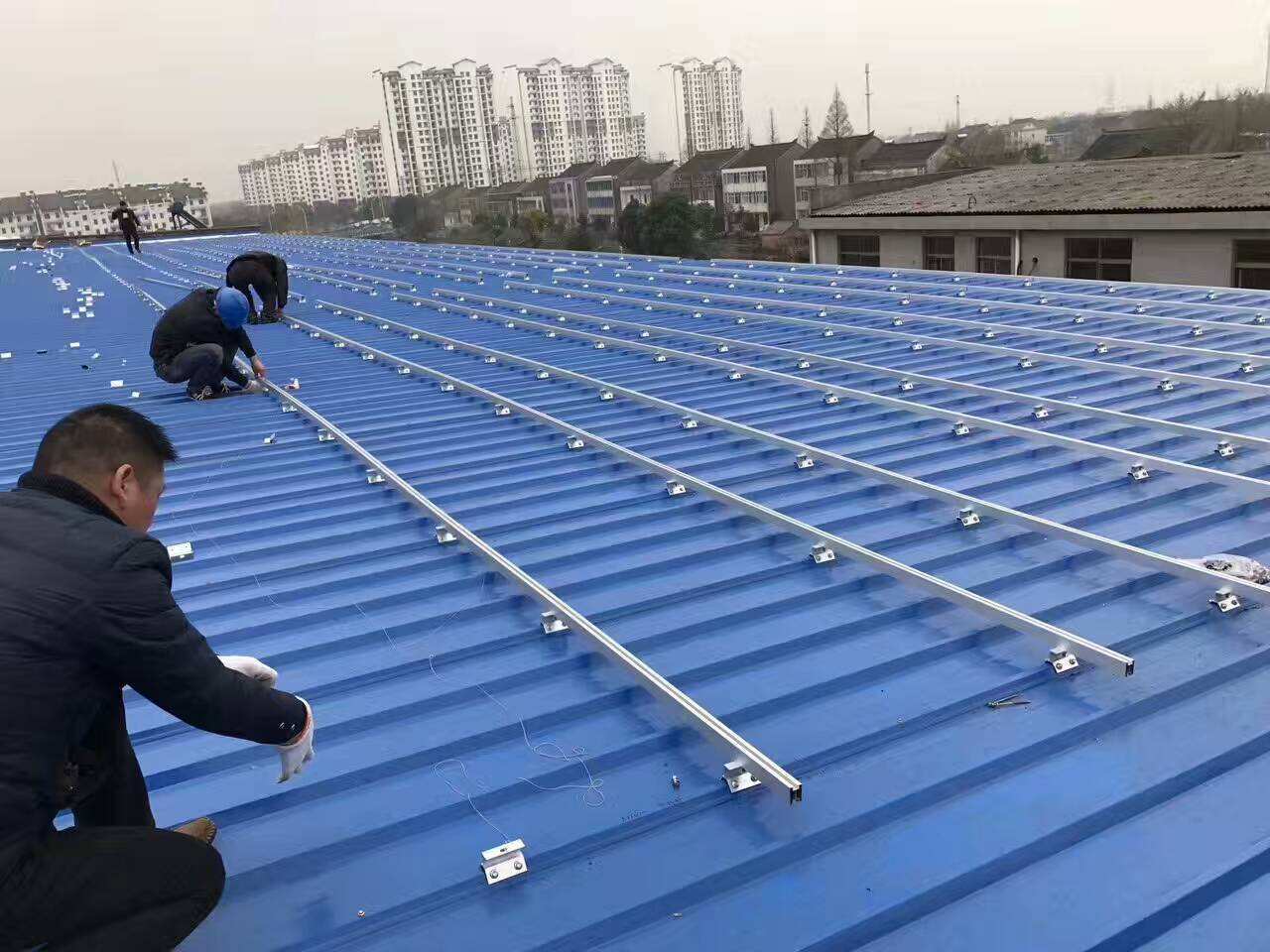Understanding the Fundamentals of Solar Panel Mounting Systems
The solar industry continues to evolve rapidly, and mounting solutions play a crucial role in successful installations. L-foot solar mounts have emerged as one of the most reliable and cost-effective options for securing solar panels to various roof types. These innovative mounting components serve as the critical connection point between your roof and the solar panel rail system, ensuring both stability and proper water drainage.
L-foot solar mounts derive their name from their distinctive L-shaped design, which provides both vertical support and horizontal attachment points. This simple yet ingenious configuration has become increasingly popular among solar installers and homeowners alike, offering an optimal balance of structural integrity and ease of installation.
Key Components and Design Features
Material Construction and Durability
L-foot solar mounts are typically manufactured from high-grade aluminum or stainless steel, materials chosen specifically for their exceptional durability and resistance to environmental factors. The aluminum construction offers superior corrosion resistance while maintaining a lightweight profile that doesn't add unnecessary burden to roof structures. These mounts undergo rigorous testing to ensure they can withstand extreme weather conditions, from heavy snow loads to high winds.
The mounting hardware includes pre-drilled holes and often features serrated surfaces that enhance grip and prevent slippage. This attention to detail in material selection and design contributes to the long-term reliability of solar installations, typically matching or exceeding the 25-year warranty period of most solar panels.
Adjustability and Compatibility
One of the standout features of L-foot solar mounts is their exceptional adjustability. The vertical leg of the L-foot can be adjusted to accommodate various roof pitches and irregularities, ensuring optimal panel positioning. This flexibility allows installers to achieve proper leveling even on uneven surfaces, which is crucial for maximizing solar energy production.
These mounts are designed to be compatible with most solar racking systems and can be used with different types of roof attachments, including lag bolts, hanger bolts, and specialty flashings. This versatility makes L-foot solar mounts an ideal choice for both residential and commercial installations across diverse roofing materials.

Installation Process and Best Practices
Preparation and Planning
Successful installation of L-foot solar mounts begins with thorough preparation. This includes careful roof assessment to identify structural support points and ensure proper water drainage patterns won't be disrupted. Installers must locate and mark roof rafters or trusses, as these provide the secure attachment points necessary for mounting.
Professional installers typically create detailed layout plans that specify exact mount locations, considering factors such as local wind load requirements and snow accumulation patterns. This planning phase is crucial for optimizing the number of L-foot mounts needed while ensuring the system meets all relevant building codes and structural requirements.
Mounting Techniques and Safety Considerations
The installation of L-foot solar mounts requires precise attention to detail and adherence to manufacturer specifications. Each mount must be properly sealed and flashed to prevent water intrusion, using industry-approved waterproofing methods. Installers must ensure proper torque specifications are met for all fasteners to prevent both under-tightening and over-tightening, which could compromise the installation's integrity.
Safety during installation is paramount, requiring proper fall protection equipment and careful handling of tools and materials on the roof surface. Experienced installers follow established safety protocols and use appropriate personal protective equipment throughout the mounting process.
Cost Benefits and Economic Advantages
Initial Investment Considerations
L-foot solar mounts represent one of the most cost-effective solutions in the solar mounting market. Their simple design and standardized manufacturing processes help keep production costs low, savings that are typically passed on to end users. When compared to more complex mounting solutions, L-foot systems often require fewer components and less specialized tooling, further reducing initial investment costs.
The economic advantages extend beyond just the hardware costs. The straightforward installation process means reduced labor hours and lower installation costs, making solar energy more accessible to a broader range of property owners. This efficiency in both materials and labor contributes significantly to the overall return on investment of solar installations.
Long-term Value and Maintenance
The durability and reliability of L-foot solar mounts translate into minimal maintenance requirements over the system's lifetime. Their robust construction and corrosion-resistant materials mean fewer replacement needs and reduced maintenance costs compared to some alternative mounting solutions. This long-term reliability helps protect the initial investment in solar infrastructure.
Property owners benefit from the peace of mind that comes with knowing their solar panels are secured by proven technology that has demonstrated its effectiveness across millions of installations worldwide. The reduced likelihood of mounting-related issues helps ensure consistent energy production and steady returns on solar investments.
Frequently Asked Questions
How long do L-foot solar mounts typically last?
L-foot solar mounts are designed and constructed to last for the entire lifetime of your solar panel system, typically 25-30 years or more. When properly installed and maintained, these mounts can effectively secure your solar panels for decades, backed by manufacturer warranties that often match the duration of solar panel guarantees.
Can L-foot solar mounts be installed on any roof type?
While L-foot solar mounts are highly versatile, their suitability depends on specific roof characteristics. They work excellently with most pitched roof types, including asphalt shingle, metal, and tile roofs, when paired with appropriate flashing and attachment methods. However, flat roofs might require different mounting solutions or additional adaptors.
What maintenance do L-foot solar mounts require?
L-foot solar mounts generally require minimal maintenance. However, it's recommended to perform annual visual inspections to check for any signs of wear or loosening. During these inspections, verify that all mounting hardware remains properly torqued and that waterproofing elements maintain their integrity. Any issues identified during inspection should be addressed promptly by a qualified professional.


